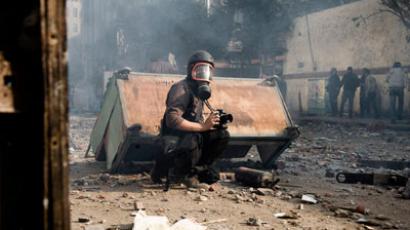State Department denies Syria's use of chemical weapons despite media reports

A classified State Department cable relayed US officials’ beliefs that Syrian President Bashar al-Assad used chemical weapons against opposition rebels but an investigation on Monday concluded that Assad was in fact using riot-control gas.
Foreign Policy’s “The Cable” reported Tuesday that a secret diplomatic cable provided information that Assad’s military had used chemical weapons in an attack that left five dead and injured about 100 in the city of Homs.“We can’t definitely say 100 percent, but Syrian contacts made a compelling case that Agent 15 was used in Homs,” a White House official told Foreign Policy Magazine under condition of anonymity. Agent 15, also known as 3-Quinuclidinyl Benzilate (BZ), is an incapacitating chemical that causes hallucinations and confusion and can sometimes be lethal.The cable had been signed and classified as “secret” by US consul general in Istanbul, Scott Frederic Kilner. It included interviews with activists, doctors and defectors who all believed the Assad regime had used chemical weapons in an attack against the rebels, which means he would have crossed the “red line” US President Barack Obama spoke about last August. Crossing this line would have evoked the possibility of direct US intervention in the Syrian conflict.Foreign Policy claimed the report ‘confirmed’ US officials’ worst fears: that chemical weapons were being used in Syria and that Assad was ‘testing US red lines.’But the results of a State Department investigation show that the material used by the Assad regime was a “riot control agent” which was designed not to have any lasting effects but was more dangerous than officials estimated, since it was released in dense areas.“It is meant to be short term,” a State Department official told CNN. “But just like with tear gas, if you breathe in an entire canister, that can have a severe effect on your lungs and other organs.”Dr. Abu al Fida, who treated about 30 of the gas victims, told CNN that proximity to the substance played a significant role in the severity of the symptoms. Victims who were closest to the riot gas suffered paralyses, seizures, muscle spasms and in some cases blindness – symptoms that could have also resulted from exposure to chemical weapons.Some of the victims were effectively treated with a medication normally used to treat people exposed to the chemical weapon sarin.The results of the new investigation may bring comfort to Americans worried about a US intervention in Syria, since riot gas does not classify as a chemical weapon and its use, however deadly, would therefore not be crossing the ‘red line’."The president was very clear when he said that if the Assad regime makes the tragic mistake of using chemical weapons, or fails to meet its obligation to secure them, the regime will be held accountable," National Security Council Spokesman Tommy Vietor told CNN.














